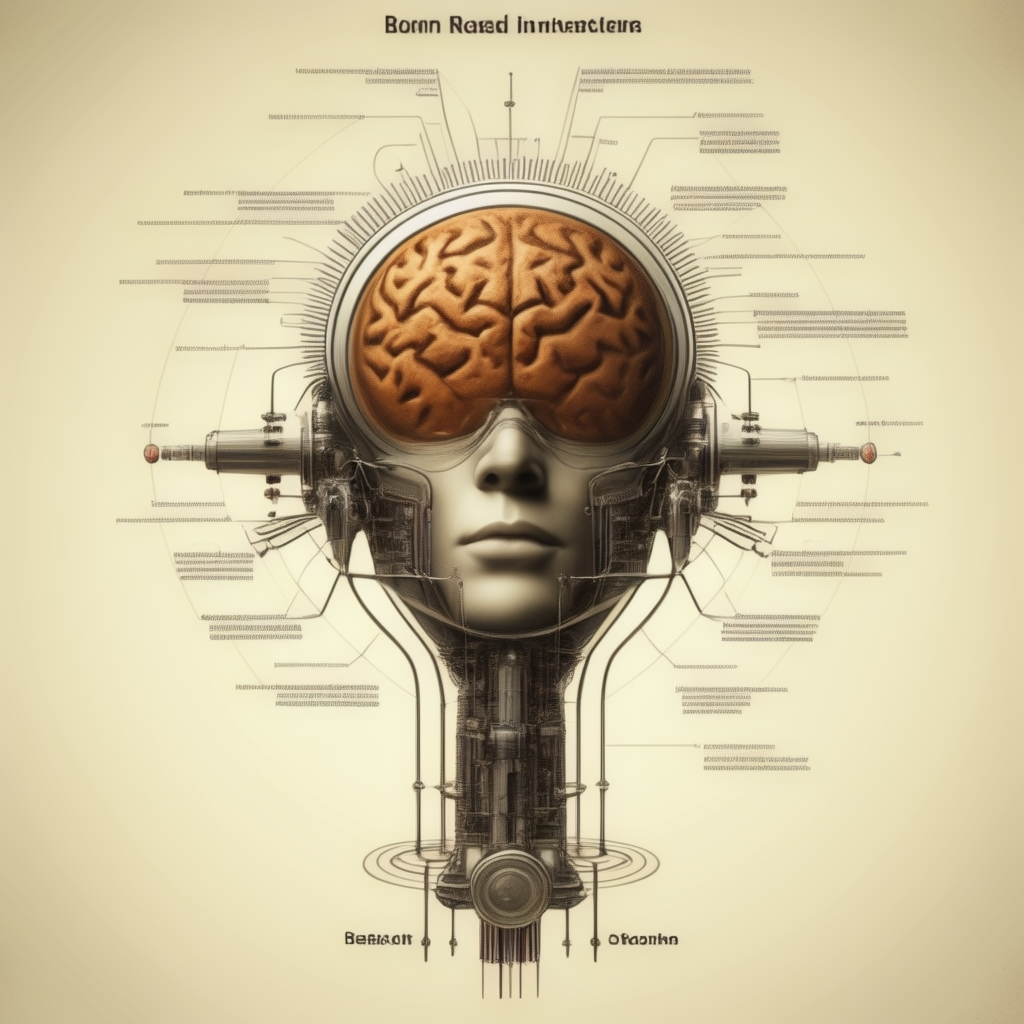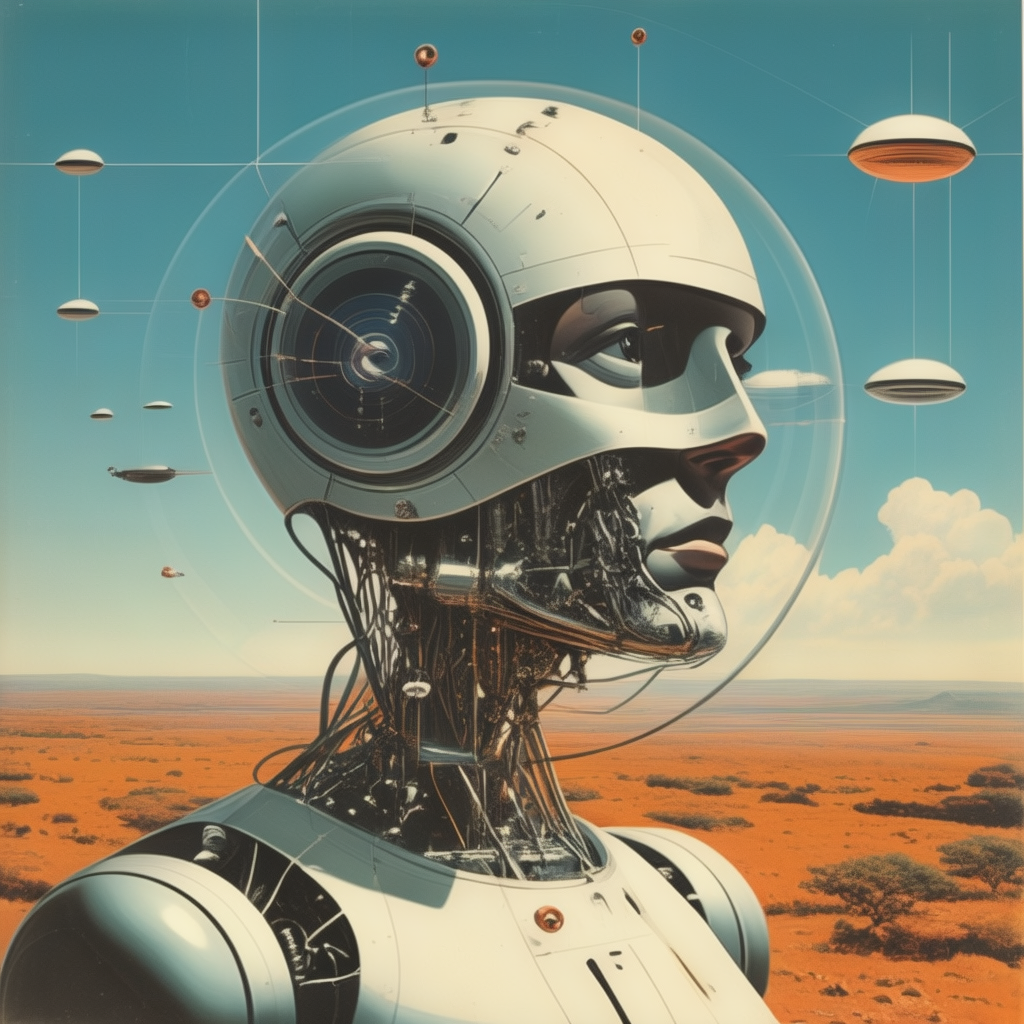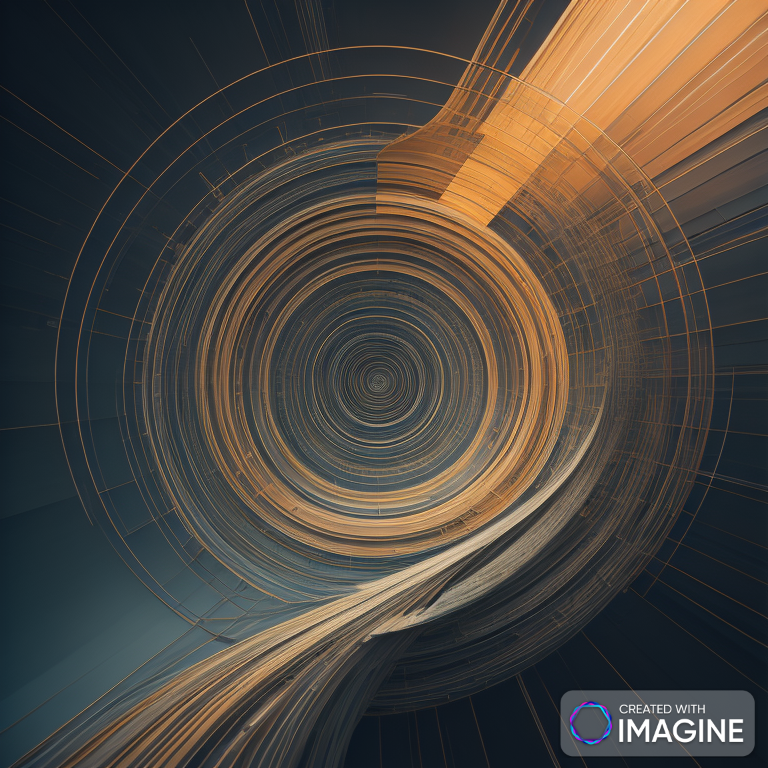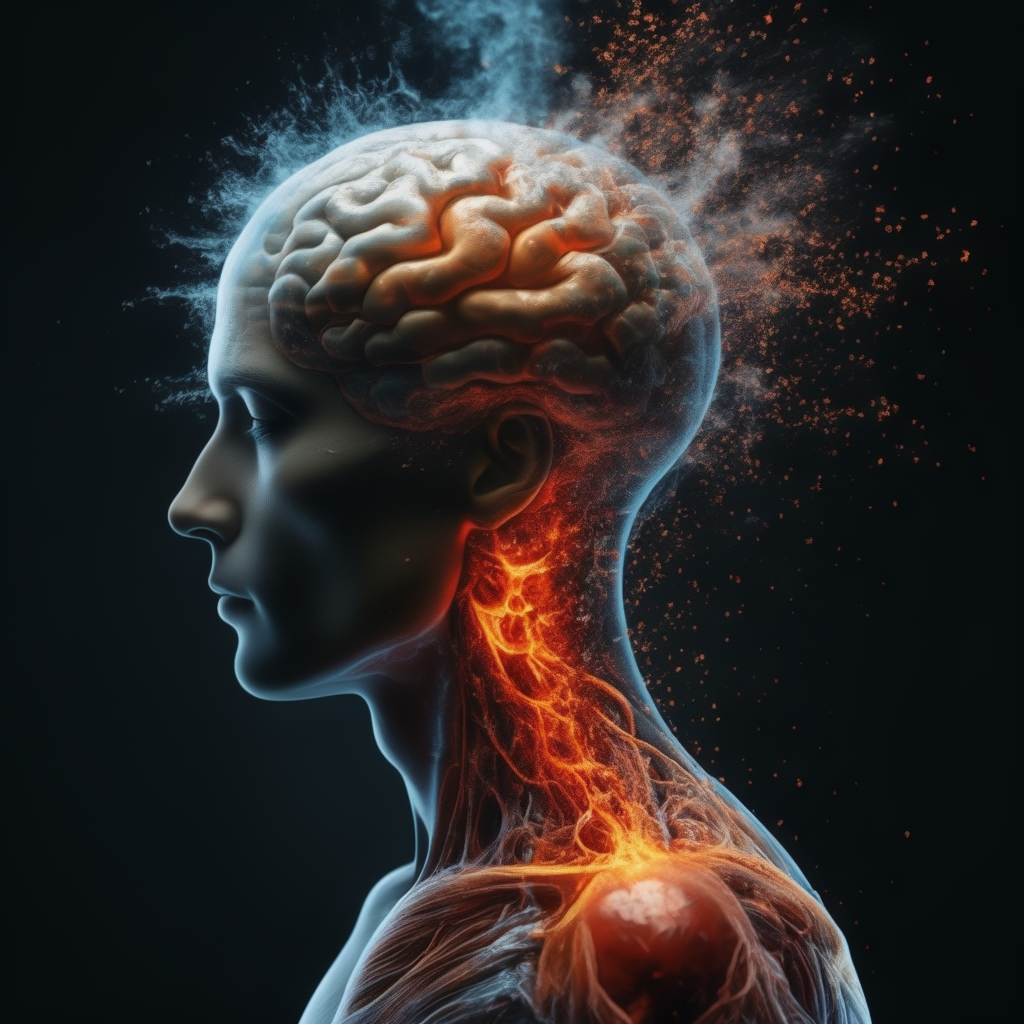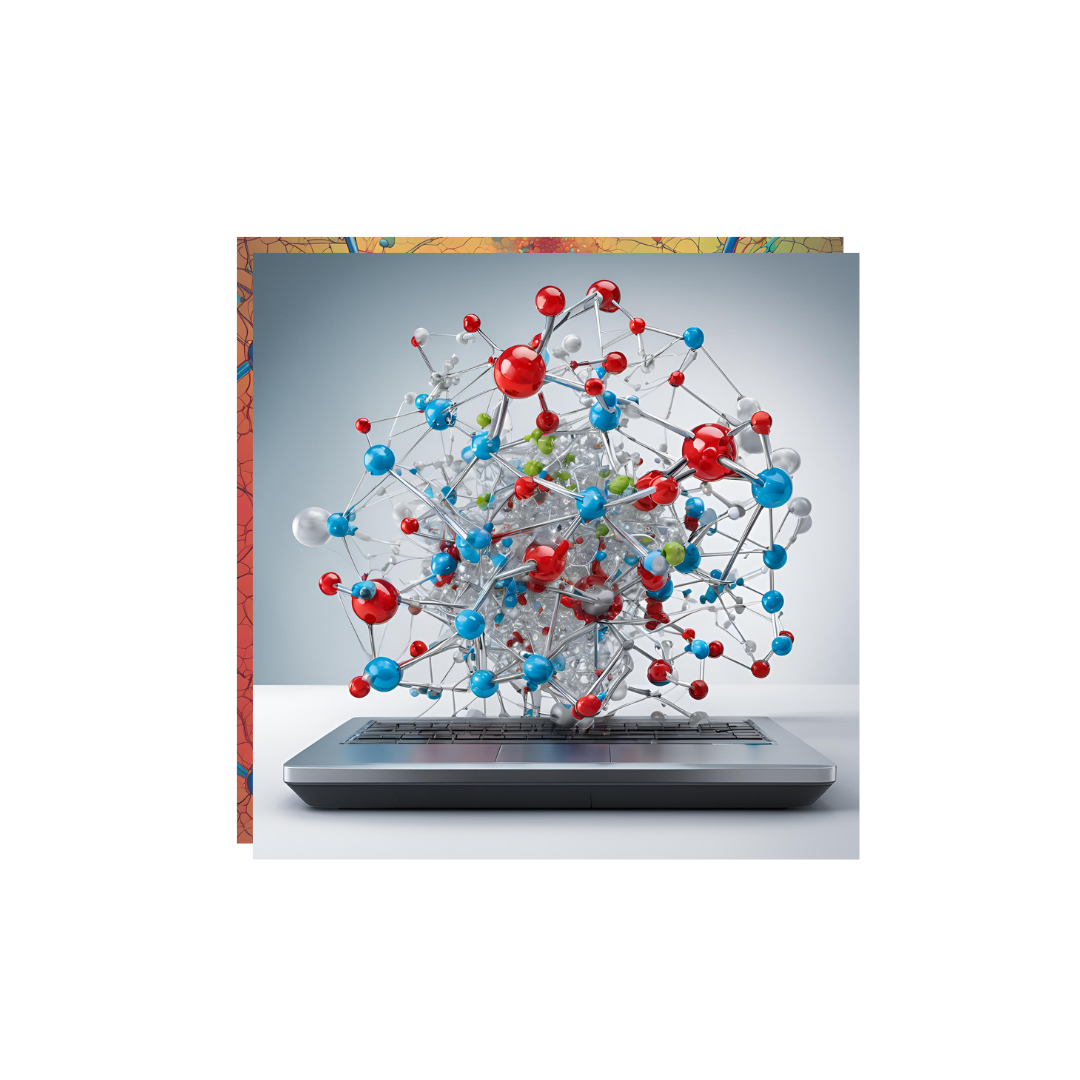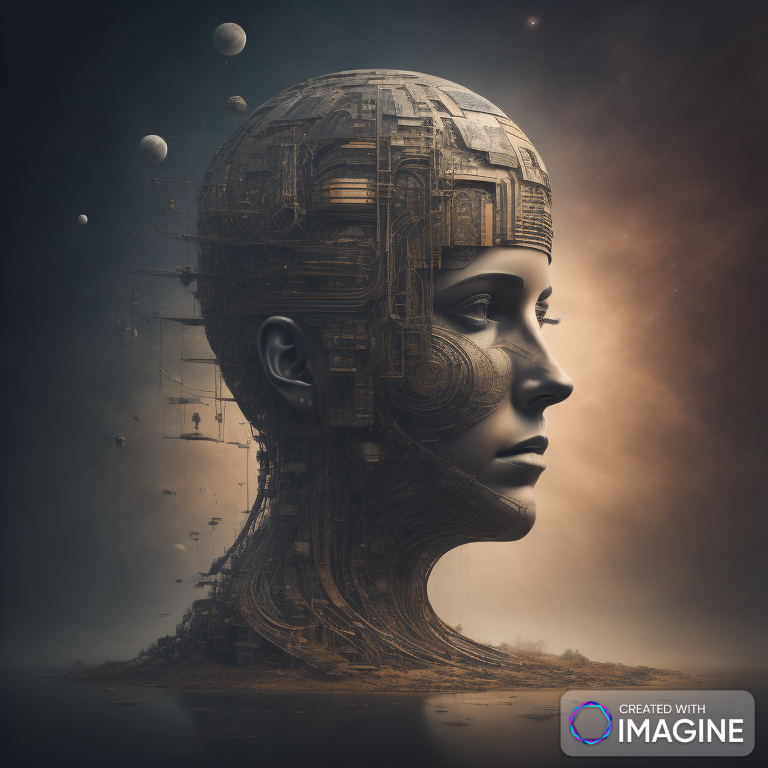Introduction
Pattern recognition is the cornerstone of intelligence, not just for AI and machine learning but also for humans and, arguably, the universe itself. It’s the ability to identify regularities, predict outcomes, and make sense of complex information. From our brains’ capacity to recognize faces and voices to AI’s powerful image and speech recognition models, pattern recognition helps us navigate life and understand the world. On a cosmic level, pattern recognition may even underlie the structures and phenomena observed in physics and astronomy.
In this blog post, we’ll explore how pattern recognition manifests in AI and machine learning, the human brain, and how it may connect to the patterns and laws that govern the universe.
1. Pattern Recognition in Artificial Intelligence and Machine Learning
In the field of AI and ML, pattern recognition is foundational, forming the basis for a range of applications, from language translation to self-driving cars. Machine learning models are designed to identify and learn from patterns within data to make decisions or predictions.
1.1 Neural Networks and Deep Learning
- Neural networks, especially deep learning models, are inspired by the brain’s structure and are designed to recognize complex patterns in high-dimensional data. For instance, convolutional neural networks (CNNs) specialize in image recognition, learning to identify features like edges, textures, and shapes across layers.
- These models progressively recognize patterns from basic forms to more complex images, allowing them to differentiate between objects, faces, and even abstract shapes.
1.2 Supervised vs. Unsupervised Learning
- Supervised learning models learn from labeled data, which guides them in recognizing specific patterns, like spam emails or cats in images. In contrast, unsupervised learning finds hidden patterns within unlabeled data, revealing clusters or associations, such as customer preferences in e-commerce.
- Pattern recognition in reinforcement learning allows systems to learn through trial and error, recognizing patterns in rewards to improve their strategies in dynamic environments, like games or robotics.
1.3 Challenges in AI Pattern Recognition
- Despite impressive achievements, AI models struggle with contextual understanding and generalization across different domains. For example, an image-recognition model trained to identify animals might fail if presented with an animal in an unfamiliar setting, highlighting the challenge of transferring learned patterns across contexts.
- Another limitation is overfitting, where a model becomes too finely attuned to its training data’s patterns and struggles to generalize, which can lead to poor performance on new data.
2. Pattern Recognition in Human Cognition
Humans are naturally skilled at recognizing patterns, a skill crucial for survival and adaptation. From facial recognition to language acquisition, our brains are constantly interpreting signals and finding structure in the sensory world.
2.1 The Neuroscience of Pattern Recognition
- The human brain, particularly the visual cortex and temporal lobes, is finely tuned to recognize patterns, especially in visual and auditory stimuli. For instance, fusiform face area (FFA) in the brain specializes in facial recognition, allowing us to recognize familiar faces with high accuracy.
- Our prefrontal cortex is involved in higher-order pattern recognition, connecting current sensory inputs with memories to make predictions and decisions based on past experiences.
2.2 Evolutionary Advantages of Pattern Recognition
- Pattern recognition is rooted in evolution, providing humans with survival advantages. Early humans relied on recognizing animal tracks, weather patterns, and even social cues to make decisions that could mean life or death.
- Humans are wired to identify causal relationships, which, while not always accurate, helps in making quick judgments. This sometimes leads to cognitive biases and false positives (e.g., seeing patterns in random data, also known as pareidolia), but overall, it serves as a beneficial adaptation.
2.3 Pattern Recognition in Language and Learning
- In language acquisition, humans recognize patterns in syntax and phonetics, enabling us to learn complex languages through repetition and contextual clues.
- Cognitive schemas, mental frameworks that help us organize and interpret information, also rely on pattern recognition. These schemas help in processing new information by comparing it with existing knowledge, which is why humans can quickly adapt to new environments and situations.
3. Patterns in the Universe: Order in Chaos
Pattern recognition extends beyond AI and human cognition to the very fabric of the universe. The physical world is filled with patterns, from the smallest atomic structures to vast cosmic formations.
3.1 Mathematical Patterns and Natural Laws
- The universe exhibits mathematical patterns, which scientists have long used to understand the laws governing everything. Symmetry, for instance, is a fundamental aspect of the universe seen in the laws of physics and the ++
- Patterns like the Fibonacci sequence and Golden Ratio emerge naturally in the shapes of galaxies, plants, and seashells, suggesting an intrinsic order in nature. These recurring patterns reflect the self-organizing principles of nature, where complex systems arrange themselves into orderly patterns.
3.2 Fractals and Self-Similarity
- Fractals are geometric patterns that repeat at different scales, often found in nature, such as in the branching of trees, the structure of snowflakes, or the formation of mountain ranges. This self-similarity represents a type of infinite pattern where smaller parts mirror the larger whole.
- In the context of the universe, fractals illustrate how complex structures can emerge from simple rules, offering insights into phenomena like galaxy distribution and turbulent flows in fluids.
3.3 Quantum Mechanics and Uncertainty Patterns
- At the quantum level, particles do not have fixed positions or velocities, displaying probabilistic patterns governed by the Heisenberg Uncertainty Principle. Quantum systems are described by probability distributions, revealing patterns only when observed over time or through multiple observations.
- Wave-particle duality is another pattern observed at the quantum scale, where particles like electrons exhibit characteristics of both particles and waves, demonstrating a form of duality that challenges classical understanding.
3.4 Cosmic Patterns: The Large-Scale Structure of the Universe
- On a cosmic scale, patterns are observed in the cosmic web—the large-scale structure of the universe where galaxies form along filaments, separated by vast voids. This structure results from gravitational forces acting on matter over billions of years, creating a pattern of density that resembles a network.
- The CMB (Cosmic Microwave Background) radiation, which is the afterglow of the Big Bang, also shows subtle patterns. These fluctuations provide a snapshot of the early universe’s density variations and have helped scientists map the universe’s evolution.
4. Bridging Patterns: AI, Human Minds, and the Universe
The parallels between AI, human cognition, and the universe’s patterns suggest an interconnected view of intelligence and structure.
4.1 Are Human and AI Pattern Recognition Similar?
- Both AI and human brains use pattern recognition to learn from experience, though they approach it differently. AI is data-driven and follows strict algorithms, while human cognition is more flexible, shaped by experience, intuition, and context.
- Understanding this similarity could pave the way for improved AI systems that mimic human-like flexibility in pattern recognition, especially in unfamiliar scenarios.
4.2 Intelligence as Pattern Recognition
- Some theories of intelligence, such as the Predictive Processing Theory, suggest that the brain functions primarily as a prediction machine, constantly matching sensory inputs against its expectations or “patterns.”
- Similarly, advancements in AI indicate that intelligence, at its core, might be about recognizing and predicting patterns accurately. This raises questions about how close AI can come to human intelligence, or whether pattern recognition is a universal hallmark of intelligent systems.
4.3 The Universe as a Pattern Recognizer?
- The presence of patterns in the universe hints at a potential self-organizing principle. Concepts like entropy and emergence suggest that, over time, order and patterns can emerge even from randomness.
- The discovery of mathematical constants, fractals, and symmetries in nature could imply that the universe inherently “recognizes” and follows certain patterns, leading to the organized systems we observe today.
1. Basic Foundations of Pattern Recognition
- Pattern as a Fundamental Cognitive Building Block: In humans, recognizing patterns is one of the first cognitive skills developed as infants. We distinguish basic shapes, sounds, and rhythms, forming the foundation for more complex recognition tasks as we grow.
- Perception and Sensory Processing: Before recognizing patterns, organisms need reliable sensory systems. Both humans and machines rely on data acquisition (e.g., through eyes, microphones, or sensors) to capture information, which is then analyzed for patterns.
- Classification and Categorization: Pattern recognition starts with sorting information into broad categories. This is seen in AI algorithms classifying images into categories like “animal” or “vehicle” before identifying finer details. Similarly, humans categorize stimuli into mental models, such as identifying an object as edible or non-edible.
2. Intermediate Concepts in Pattern Recognition
- Association and Correlation: Once basic categories are formed, both AI and humans make associations between patterns. For example, AI might correlate user behavior with product preferences, while humans might correlate clouds with rain. This associative memory allows for learning based on pattern correlation, even if the relationships are not causal.
- Temporal Patterns and Sequence Recognition: Recognizing sequences is critical for understanding complex processes. AI uses sequence-based models like recurrent neural networks (RNNs) and transformers to interpret time-based data, such as speech and video. Humans similarly use temporal pattern recognition for language comprehension, music, and tracking movement.
- Pattern Invariance: Both humans and AI need to recognize patterns regardless of transformations. In humans, this involves recognizing faces or objects at different angles, under different lighting, or after some alteration. In AI, convolutional neural networks (CNNs) handle spatial invariance for image recognition, while transformers maintain context over longer textual sequences.
- Error Detection and Correction: Humans and AI both use error-detection mechanisms to refine pattern recognition. For instance, if an AI misclassifies an image, the model is updated to correct the error. Humans use feedback loops in the brain to correct errors in perception, such as recalibrating our sense of balance or adjusting our understanding of a spoken phrase.
3. Advanced Concepts in Pattern Recognition
- Contextual Pattern Recognition: Beyond just recognizing patterns in isolation, both AI and human cognition advance by understanding patterns in context. For example, AI models are now being designed to consider the surrounding environment or context of a pattern, as seen in NLP with contextual embeddings. Humans are exceptionally skilled at recognizing contextual nuances, which allows us to interpret meaning even in ambiguous situations.
- Multi-Modal Pattern Recognition: Human perception integrates patterns across different senses (e.g., sight, sound, touch). Similarly, advanced AI models are being developed to handle multi-modal data, integrating visual, auditory, and textual inputs to create a more holistic understanding, as seen in AI systems that analyze both images and text in social media or e-commerce.
- Meta-Patterns and Pattern Hierarchies: Humans recognize patterns within patterns, or “meta-patterns.” For instance, we can see themes within music genres or structural similarities between different languages. In AI, hierarchical models learn patterns at different levels of abstraction, where lower layers in neural networks might detect edges, and higher layers identify complex objects or concepts.
- Anomalies and Outliers: Recognizing patterns also means identifying deviations or outliers. Humans naturally detect unusual behavior or irregular shapes in visual scenes, which could signal danger or opportunity. In AI, anomaly detection algorithms are used in fraud detection, cybersecurity, and quality control, recognizing patterns that differ from established norms.
- Predictive Patterning and Forecasting: Advanced pattern recognition involves forecasting future trends based on historical patterns. Humans often intuitively predict outcomes based on patterns of past experiences, while AI models use time-series forecasting and predictive analytics to project future trends in business, weather, and more.
4. Beyond Pattern Recognition: Toward Generalization and Abstraction
- Generalization Across Domains: A key goal in AI is to create systems capable of transfer learning—recognizing patterns in one domain and applying the learned patterns to a new, unrelated domain. Humans are naturally adept at this, taking insights from one area and using them in another. For example, a chef might use pattern recognition from cooking to understand chemistry concepts.
- Conceptual and Abstract Patterns: Advanced human cognition allows us to recognize abstract patterns, such as philosophical ideas or mathematical principles, without direct sensory input. AI is beginning to explore abstract patterning through models like symbolic AI and conceptual embeddings, although it remains an area of active research.
- Self-Similarity and Recursion: Many natural patterns, like fractals in nature, exhibit self-similarity across different scales. Humans can recognize recursive structures and apply recursive thinking to problem-solving. Recursive models in AI are used for hierarchical data structures, decision trees, and more advanced planning.
- Pattern Recognition in Complex Systems: Recognizing patterns in highly complex systems is one of the most challenging tasks for both AI and humans. Complex systems, such as ecosystems or financial markets, involve numerous interacting components and feedback loops. AI uses complex systems modeling and agent-based simulations to understand these intricate patterns, while humans often rely on heuristics and simplified mental models.
5. Cosmic and Philosophical Aspects of Pattern Recognition
- Symmetry and Universal Patterns: The concept of symmetry, prevalent in mathematics and physics, reflects a fundamental pattern in the universe, from atomic structures to galaxies. Recognizing these symmetries helps scientists understand physical laws. This reflects a deeper idea that the universe itself might be “pattern-aware” in its structure and evolution.
- The Concept of Scale-Invariance: In cosmology, scale-invariance means that certain patterns, like galaxy distributions, look similar regardless of the scale at which they’re observed. This principle mirrors fractal patterns on Earth and suggests that pattern recognition may be fundamental to understanding the universe’s architecture.
- Existential Patterns and Meaning: Humans often search for patterns to create meaning, connecting personal experiences, historical events, and even life trajectories into coherent narratives. Philosophers and neuroscientists argue that our drive to find meaning is an extension of our pattern-recognition abilities, as we piece together experiences into structured worldviews.
6. Frontiers of Pattern Recognition in AI and Human Cognition
- Adaptive Learning and Real-Time Pattern Adjustment: Emerging AI systems aim to mimic humans’ ability to adapt pattern recognition on the fly. For instance, humans can recognize and interpret unfamiliar accents after brief exposure, an area where adaptive learning models are being developed for AI.
- Interdisciplinary Pattern Integration: In real-world applications, humans combine patterns from multiple disciplines (e.g., social, economic, and environmental data in policy-making). Future AI systems will likely incorporate interdisciplinary data streams, creating more versatile systems that synthesize patterns across fields to produce complex, integrated insights.
- Quantum Patterns and Quantum Computing: Quantum computing opens new horizons for pattern recognition. Unlike classical bits, quantum bits (qubits) can exist in multiple states simultaneously, potentially recognizing patterns in highly complex data sets far more efficiently than classical computers. Quantum AI could dramatically expand pattern recognition abilities, especially for complex, probabilistic systems.
- Ethical and Cognitive Limits of Pattern Recognition: As pattern recognition models grow, ethical questions arise about AI interpreting patterns that could lead to sensitive insights (e.g., health predictions, personal preferences). Additionally, human cognitive biases in recognizing patterns—like seeing cause-effect where there is none—highlight the challenges of maintaining objectivity.
The concept of patterns in the universe traces back to the very beginning of time, specifically to the aftermath of the Big Bang. This “explosion” set in motion everything we understand about cosmic patterns today. Below is a detailed explanation of how these patterns formed, the theories behind them, and the scientific evidence supporting their existence.
1. The Beginning: The Big Bang and Emergence of Cosmic Patterns
The Big Bang theory posits that the universe began as an extremely hot, dense point roughly 13.8 billion years ago. In an instant, this singularity began expanding, cooling rapidly as it grew.
As the universe cooled, particles began to form and combine in various ways, laying the foundation for the structural patterns we observe today. Here are key stages in the formation of patterns after the Big Bang:
- Inflationary Epoch: Within the first moments after the Big Bang, the universe underwent a period of exponential expansion, known as cosmic inflation. This process magnified microscopic quantum fluctuations (small variations in energy) in the fabric of space-time, stretching them across vast scales. These fluctuations became the “seeds” for all cosmic structures, leading to the formation of galaxies, stars, and planets.
- Formation of Elementary Particles: As the universe continued to cool, quarks combined to form protons and neutrons. The patterns of particle interactions, governed by forces like electromagnetism and gravity, began shaping the early universe’s composition, laying the groundwork for the formation of atoms.
- Matter and Antimatter Asymmetry: A fundamental pattern in the universe is the dominance of matter over antimatter, which likely arose from small asymmetries in particle behavior. This matter-antimatter imbalance allowed the universe to evolve with the matter necessary to form stars, galaxies, and ultimately life.
2. Fundamental Forces and the Structuring of the Universe
The four fundamental forces—gravity, electromagnetism, the strong nuclear force, and the weak nuclear force—played distinct roles in shaping the universe’s patterns.
- Gravity and Large-Scale Structures: Gravity became the dominant force at large scales, pulling matter together to form galaxies, galaxy clusters, and superclusters. This force caused matter to coalesce into dense regions, forming a “cosmic web” of interconnected galaxies and voids. This web is a pattern visible across the observable universe.
- Electromagnetic Force and Atomic Structures: The electromagnetic force enabled particles to combine into atoms, which then combined into molecules, leading to the formation of stars and galaxies. The electromagnetic interaction allows complex structures like molecules and life forms to arise, governed by predictable atomic and molecular patterns.
3. Cosmic Background Radiation as Evidence of Patterns
One of the most significant pieces of evidence for early patterns in the universe is the Cosmic Microwave Background (CMB) radiation, a faint glow left over from the Big Bang. Discovered in the 1960s, this radiation provides a “snapshot” of the universe about 380,000 years after the Big Bang when atoms first formed.
- CMB and Density Fluctuations: Tiny temperature fluctuations in the CMB correspond to density fluctuations in the early universe, which were the initial seeds for galaxy formation. These density variations, mapped by satellites like the Cosmic Background Explorer (COBE) and Planck, reveal a pattern of “hot” and “cold” spots across the universe, indicating the uneven distribution of matter.
- Power Spectrum of the CMB: Scientists analyze these fluctuations using a “power spectrum,” which shows a regular pattern in the CMB’s temperature. The power spectrum confirms that the structure of the universe follows specific patterns laid down in its infancy, and it aligns closely with predictions from the Big Bang theory and inflationary models.
4. Formation of Galaxies, Stars, and Stellar Patterns
Over billions of years, the early density fluctuations and gravitational forces led to the formation of galaxies, stars, and other structures.
- Galaxy Formation and the Cosmic Web: The cosmic web—a vast network of filaments, clusters, and voids—is a prominent pattern in the large-scale structure of the universe. Galaxies are not randomly distributed but instead form along these filamentous structures. Gravity pulls galaxies together in clusters and superclusters, separated by vast cosmic voids.
- Star Formation Patterns: Stars form in molecular clouds, massive regions of gas and dust that collapse under gravity. This collapse occurs in a pattern due to the cloud’s density and temperature variations. Inside galaxies, stars often form in spiral patterns or clusters, such as the open clusters and globular clusters observed in the Milky Way.
- Spiral and Elliptical Galaxy Patterns: Galaxies themselves exhibit distinct shapes, such as spiral or elliptical, depending on their formation and evolutionary history. Spiral galaxies, for example, exhibit rotational symmetry and a characteristic spiral arm pattern resulting from their angular momentum.
5. Elemental Patterns and Stellar Nucleosynthesis
Stars are cosmic factories, synthesizing elements in a pattern known as stellar nucleosynthesis. This process explains the abundance of elements and their patterns throughout the universe.
- Periodic Patterns of Elements: The fusion process in stars creates heavier elements in a predictable sequence, contributing to the universe’s “chemical fingerprint.“ Light elements like hydrogen and helium were produced in the Big Bang, while elements up to iron are created in stars. Elements heavier than iron form in supernovae, dispersing these elements in a pattern across galaxies.
- Abundance of Elements and Cosmic Distribution: The elements formed by stellar nucleosynthesis follow a predictable distribution pattern in space, leading to regions with particular chemical compositions. This pattern is evident in the formation of planets and organic molecules, crucial for life as we know it.
6. Symmetry and Self-Similarity in the Universe
Symmetry is a profound concept in physics that reflects balance and uniformity in the universe’s laws and structure. Symmetries and self-similar patterns appear at various scales.
- Fractal Patterns and Self-Similarity: Some natural structures, such as the distribution of galaxies or the branching of river networks on Earth, exhibit fractal-like patterns. This self-similarity, where patterns repeat at different scales, is a common feature in nature and is reflected in certain cosmological structures.
- Mathematical Symmetries: The universe exhibits numerous mathematical symmetries, from particle physics to the structure of space-time itself. These symmetries are fundamental to physical laws; for instance, Noether’s theorem connects conservation laws (like energy and momentum) to symmetries in physical laws.
- Broken Symmetry: Certain processes in the universe break symmetry, creating diversity and complexity. For instance, the early inflationary period broke the uniform symmetry of the universe, introducing small fluctuations that led to the structured, non-uniform distribution of matter.
7. Quantum Patterns and the Fabric of Reality
At the smallest scales, the universe is governed by quantum mechanics, which introduces unique patterns in the behavior of particles and fields.
- Wave-Particle Duality: Particles, such as electrons, exhibit both particle and wave-like properties, leading to interference patterns and probabilistic distributions. This duality is fundamental in quantum mechanics and is one of the first observed patterns in subatomic behavior.
- Quantum Entanglement and Non-Locality: In quantum physics, entangled particles exhibit correlations regardless of the distance between them, an effect Einstein called “spooky action at a distance.” This pattern of non-local correlation challenges classical views of causality and locality.
- Quantum Foam and Space-Time Fluctuations: At extremely small scales, space-time is theorized to fluctuate in a “quantum foam” pattern, with tiny, transient fluctuations arising due to quantum uncertainty. This concept suggests that even space-time itself may have a patterned, granular structure at the Planck scale.
8. Evidence of Universal Patterns from Observational Science
Scientific discoveries and observations provide tangible evidence of these patterns:
- Redshift and Cosmic Expansion: Observations by Edwin Hubble showed that galaxies are moving away from us, evidenced by the redshift in their light. This pattern of expansion supports the Big Bang model and the notion of a dynamic, evolving universe.
- Gravitational Waves: The discovery of gravitational waves confirms that massive objects create ripples in space-time, providing evidence of large-scale cosmic patterns in the form of waves propagating through the universe.
- Dark Matter and Dark Energy: Patterns in galaxy rotation curves and large-scale cosmic structure suggest the presence of unseen mass, or dark matter, and a mysterious force, dark energy, driving the accelerated expansion of the universe. These discoveries have revealed that patterns exist beyond visible matter, shaping the cosmos in unknown ways.
9. Philosophical Implications: Patterns as the Language of the Cosmos
The existence of patterns in the universe has profound philosophical implications. Some scientists and philosophers argue that patterns may be the underlying “language” or code of reality itself. Concepts like mathematical Platonism suggest that the universe’s structure is inherently mathematical, implying that understanding patterns is key to comprehending the cosmos.
Patterns not only guide physical formation but may also reflect deeper principles of existence, intelligence, and consciousness. Observing patterns in cosmic evolution, life, and consciousness leads to questions about whether patterns are a product of underlying laws or if they hold intrinsic meaning in the architecture of reality.
In summary, patterns in the universe are woven into the fabric of reality, from the formation of galaxies to the quantum behavior of particles. Scientific theories like the Big Bang, quantum mechanics, and general relativity offer insights into why and how these patterns form. Observational evidence, such as the cosmic microwave background and gravitational waves, further affirms these patterns, revealing a universe that is structured, coherent
Conclusion
Pattern recognition, from basic sensory perception to complex abstractions, defines the evolution of intelligence and our understanding of the world. In AI, the journey has been one of transforming raw data into structured insights through increasingly sophisticated models. For humans, pattern recognition underpins not only survival but also our pursuit of knowledge, meaning, and purpose. Finally, in the universe, patterns are the structural foundation that reveals order amid chaos, suggesting that the ability to recognize and interpret patterns is a universal phenomenon, bridging the physical, the cognitive, and the artificial realms.
Pattern recognition is the thread connecting AI, human cognition, and the universe. For AI, it’s a tool for interpreting data and learning from experience. For humans, it’s a cognitive skill honed over millennia of evolution, enabling us to survive, learn, and innovate. In the universe, patterns are the structures of existence itself, from atomic arrangements to the large-scale organization of galaxies.
Understanding pattern recognition across these domains can deepen our appreciation of both artificial and natural intelligence. It opens doors to innovations in AI, offers insights into human cognition, and provides a profound look at the structure of the cosmos. Whether through a neural network, a human mind, or the cosmic web, pattern recognition reflects a shared principle that binds intelligence with the universe’s fundamental laws.

